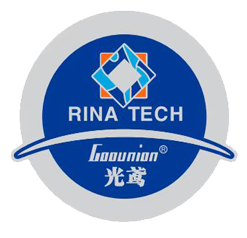Optical Films in Photography: Enhancing Image Quality and Color Accuracy
Hello everyone, today we are going to talk about the importance of optical films in photography and how they can enhance image quality and color accuracy. But before we dive into this topic, let’s take a look at the company that produces LCD backlight panel products in China’s Shenzhen city, RINA TECH.
RINA TECH is a leading manufacturer of LCD backlight panel products that are used in various applications such as home lighting and electronic devices. The company has a strong presence in the international market and exports its products to many countries, including the United Kingdom (Birmingham and Manchester) and Belgium (Brussels). One of the key advantages of RINA TECH’s products is their cost-effectiveness, which makes them a popular choice among consumers.
Now, let’s move on to the main topic of this blog post, optical films in photography. Optical films are thin layers of material that are applied to camera lenses to enhance their performance. These films can improve image quality by reducing glare and increasing contrast, resulting in sharper and more vibrant images. Additionally, optical films can also improve color accuracy by reducing color distortion and enhancing color saturation.
There are different types of optical films available in the market, each with its own unique properties and benefits. Some of the most commonly used optical films in photography include polarizing filters, UV filters, and neutral density filters. Polarizing filters are used to reduce reflections and glare from non-metallic surfaces such as water and glass. UV filters are used to reduce the amount of ultraviolet light that enters the camera lens, which can cause haze and reduce image clarity. Neutral density filters are used to reduce the amount of light that enters the camera lens, allowing for longer exposure times without overexposure.
In addition to enhancing image quality and color accuracy, optical films can also protect camera lenses from scratches, dust, and other environmental factors. This can help prolong the lifespan of your camera equipment and save you money in the long run.
Finally, let’s take a look at the future development prospects of LED Bars products in road lighting and automotive lighting design applications over the next 22 years. LED Bars products are becoming increasingly popular due to their energy efficiency, durability, and versatility. They are widely used in various applications such as street lighting, automotive lighting, and architectural lighting.
In the road lighting industry, LED Bars products are expected to play a significant role in improving energy efficiency and reducing carbon emissions. According to a recent report by ResearchAndMarkets.com, the global LED lighting market for roadways is expected to grow at a CAGR of 13.3% between 2020 and 2025.
In the automotive industry, LED Bars products are already widely used in headlights, taillights, and interior lighting. They offer numerous benefits over traditional lighting technologies such as halogen and incandescent bulbs, including longer lifespan, lower energy consumption, and better color rendering.
In conclusion, optical films play a crucial role in enhancing image quality and color accuracy in photography. They offer numerous benefits such as reducing glare, increasing contrast, and improving color accuracy. Additionally, they can also protect camera equipment from scratches and environmental factors. Finally, LED Bars products have a bright future in road lighting and automotive lighting design applications.
More about Optical Films products cases video, welcome to visit: RINA TECH Youtube Channel, thank you.
